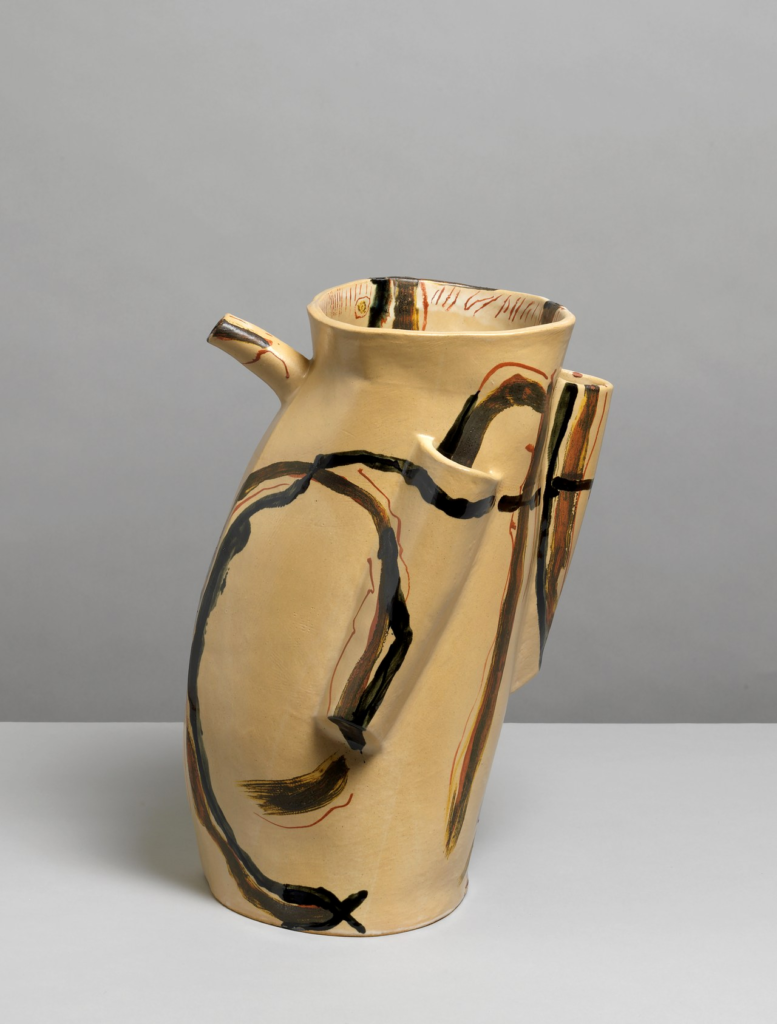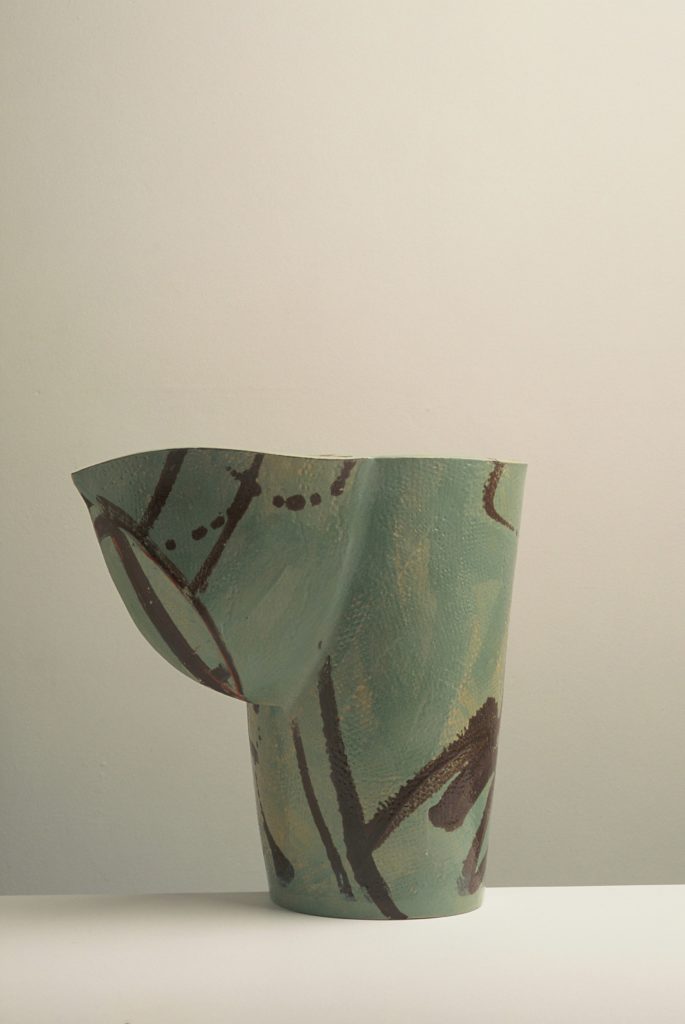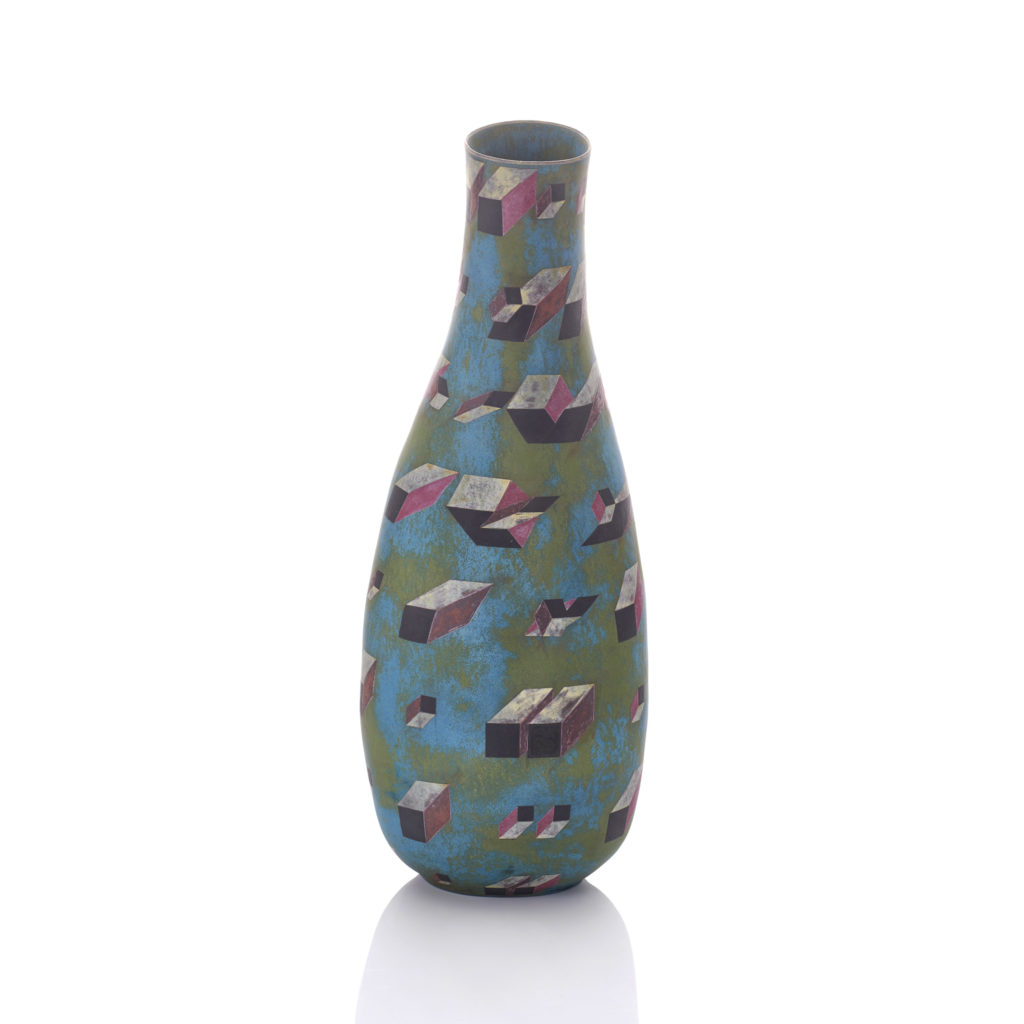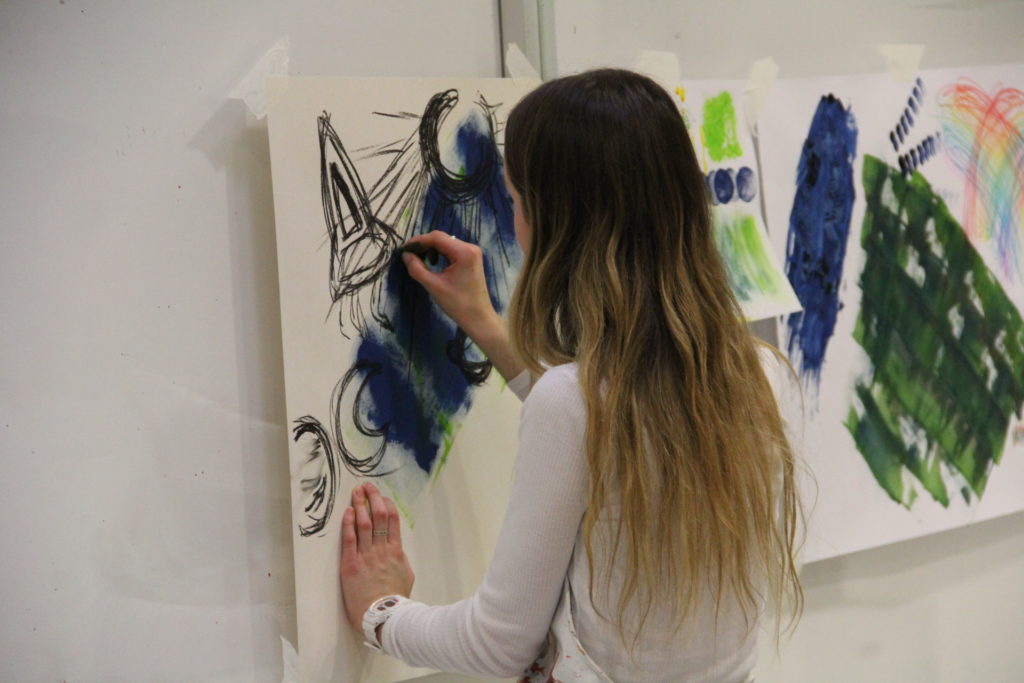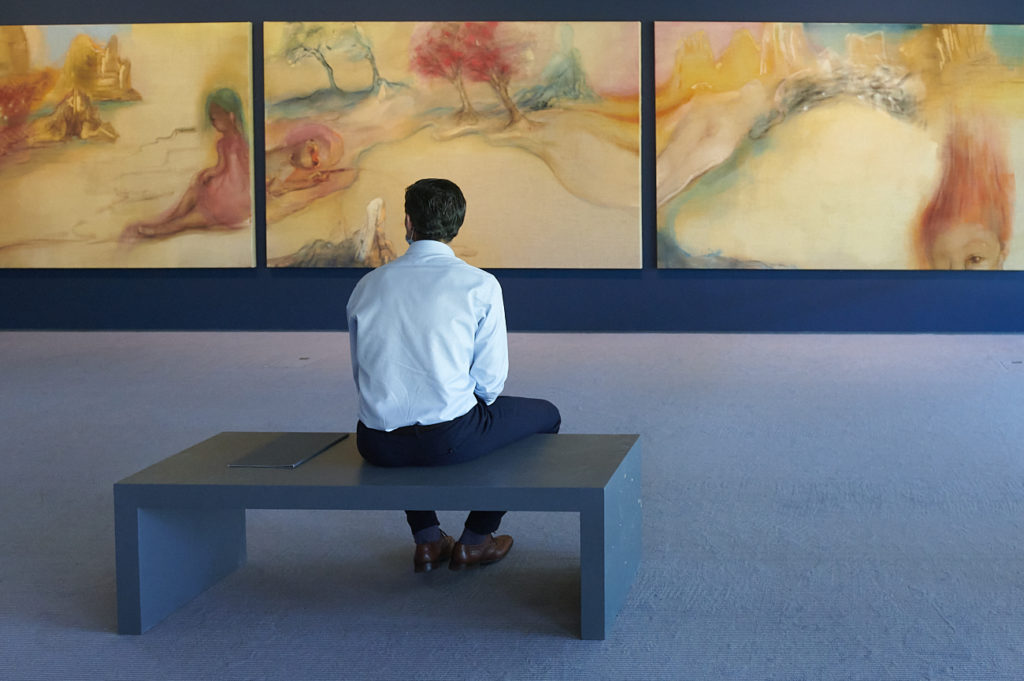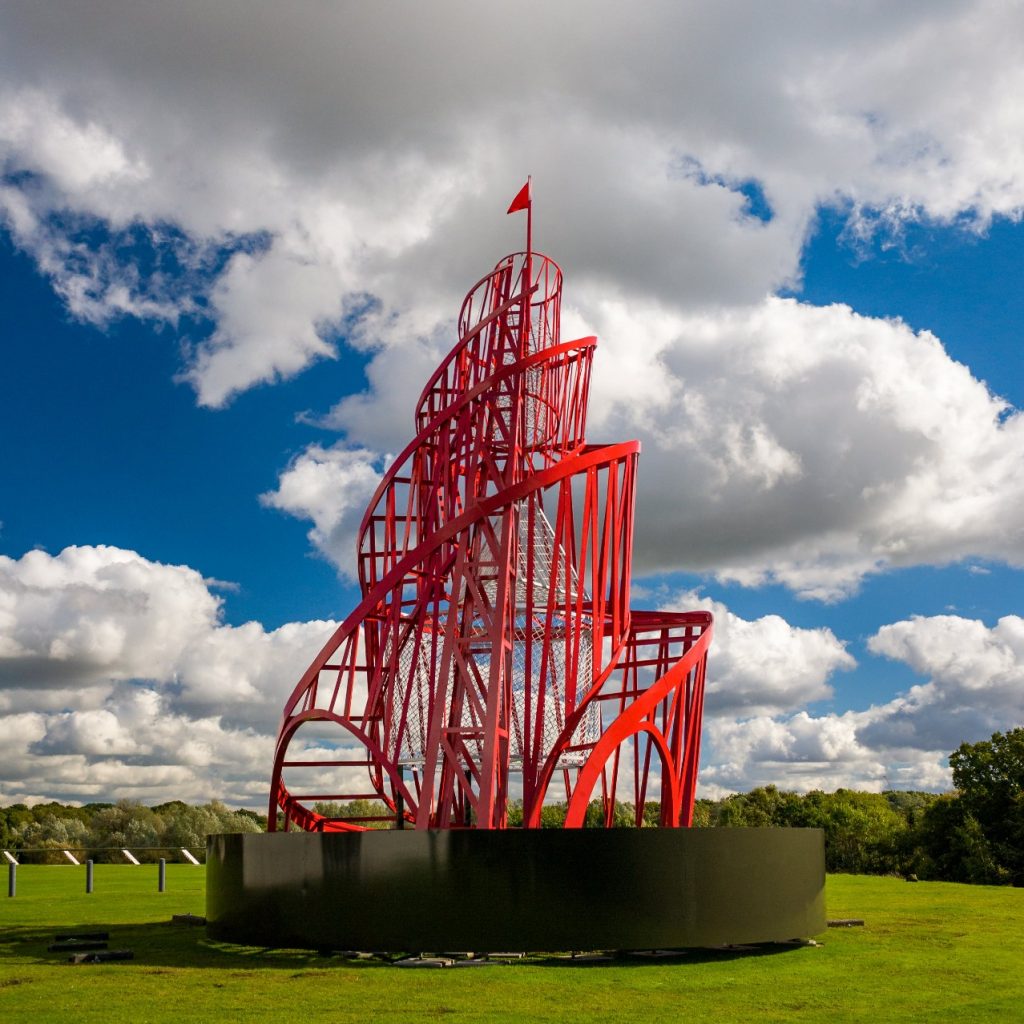Elizabeth Fritsch, Blown Away Vase; Collision of Particles, 2009. Image courtesy of Adrian Sassoon, London. Photography by Sylvain Deleu.
Impressed by the size and complexity of Fritsch’s Blown Away Vase; Collision of Particles (2009), the Centre was determined to acquire this tall, coil-built vessel from Adrian Sassoon. Its leaning form with elliptical rim has been sculpted to give the vase a distinctive asymmetrical shape. Here, Fritsch expresses her combined interest in music and mathematics, producing harmony and discord through the arrangement of cubes.
Robert and Lisa Sainsbury were passionate about studio ceramics and amassed an enviable collection that included twentieth-century greats Lucie Rie and Hans Coper. The Centre is delighted that works by Britton and Fritsch will be displayed alongside their male contemporaries, drawing much-needed attention to the women artists who were central to the development of post-modern ceramics. Chief Curator, Tania Moore, says,
‘The inclusion of important figures like Britton and Fritsch helps to address the gender imbalance prevalent in many cultural institutions and demonstrates the radical contribution women have made to the arts in the UK.’
The arrival of these works will have a lasting impact at the Centre. Calvin Winner, Head of Collections, explains, ‘although the Centre has one of the best collections of studio ceramics in the UK, neither of these important artists were previously represented. While neither Britton nor Fritsch abandoned the vessel, they both explored the abstract form and pursued the painterly possibilities of surface decoration’.
Britton’s Quirk has entered the collection thanks to generous funding from the Arts Council England/V&A Purchase Grant Fund and the Art Fund. Fritsch’s Blown Away Vase; Collision of Particles was acquired by the Centre with support from the Arts Council England/V&A Purchase Grant Fund and the Joyce and Michael Morris Bequest.
To read more about Alison Britton visit:
The art that made us: Grayson Perry exhibition inspires top artists to revisit formative works
